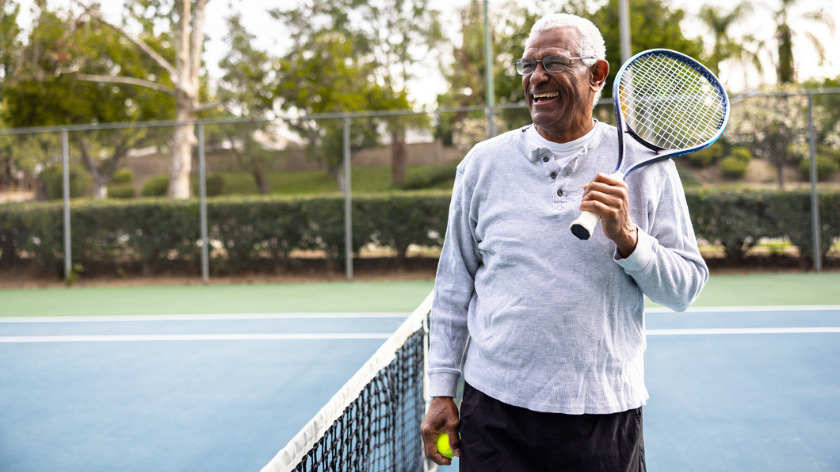Let’s do a physical activity “Throwback Thursday” but with a bit of a longer lens…back to ancient times to retrace the physical activity patterns of our ancestors.
The first stop in our history tour is over one million years ago when we were hunters and gathers. Before we learned to farm and before we domesticated animals, we literally walked (and ran!) around looking for food. It was the only way to ensure our survival. In fact, some evolutionary biologists hypothesize that it was our ability to walk long distances that helped increase our chances of survival as a species. They think it was this ability that permitted us to follow those herds of animals or trek to “greener pastures,” so to speak, to find more water and more food.
But eventually, we started to settle down. Learning to domesticate animals and farm for ourselves freed us from the need to walk long distances for survival. But we remained active because raising crops and animals is hard work! This was before markets and trade on a large scale, so communities relied mostly on the crops and animals they raised themselves to survive and thrive. While those ancestors definitely benefited from the physical activity of farming, sadly there were a slew of deadly diseases that kept their life expectancy low.
As civilizations developed, societies like the Greeks and Romans introduced competitive sports. For the Greeks it was primarily wrestling and throwing sports—they invented the Olympics, after all. The Romans valued similar sports but emphasized activities that were more militaristic in nature. These included fencing and throwing spears and javelins and hand-to-hand combat in the form of gladiators.
If we traveled to the other side of the globe during these ancient eras, we’d find the Chinese developing tai chi. Tai chi is a specific kind of activity in which participants perform slow, purposeful and graceful movements. It won’t get your heart rate up too high, but research has shown that older adults who do tai chi can reduce their risk of falls.
Meanwhile, in the ancient civilizations of the Americas, the Aztecs and Incas both played different ball sports, but not the same “futbol” or soccer that is so popular today. Another group of Native Americans, the Tarahumara, were runners. It was so central to their culture that they could run for up to 200 miles in one go!
Fast forward to our country in the 1800s. What were Americans doing to stay active? We mostly imported activities from Europe in that era – baseball didn’t appear until the 1840s and basketball not until 1896. Until those and other sports caught on, activities like gymnastics and calisthenics were popular in that era. Another sport we imported around this time was “pedestrianism,” which we would recognize now as competitive walking. These events took place over six days, though, with the winner walking sometimes over 400 miles. They were not mass participation events, by the way, and sometimes had only two or three competitors.
Mass participation events were an invention of the “running boom” of the 1970s. Actually, this was more of a jogging boom, but as Vitality members will know, it’s not about how fast you run but rather that you are out there running at all! That first running boom was followed in the 1990s by a second one. In fact, from 1990-2013 the number of finishers in America increased by over 300%, and the 5k and 10k events we know today were the product of that second boom.
This look back on how we have always been active is important because it’s only recently that our society and culture has changed so that we have so many opportunities to be sedentary. Humans were made to be active, and at Vitality we’re happy we can help encourage and reward you for doing so!
With a PhD in Exercise Physiology, Jonathan Dugas spends his days thinking about how we can help more people be more active. With four Ironman finishes and 13 marathons and counting, he’ll see you out on the road.






